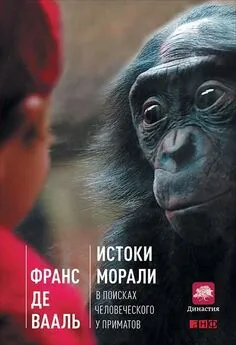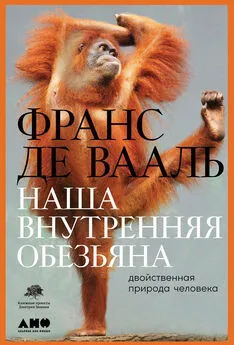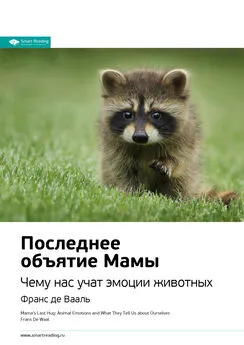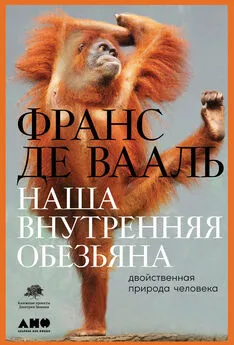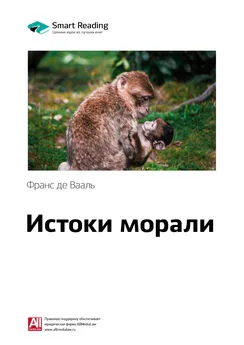Франс де Вааль - Достаточно ли мы умны, чтобы судить об уме животных?
- Название:Достаточно ли мы умны, чтобы судить об уме животных?
- Автор:
- Жанр:
- Издательство:ЛитагентАльпина6bdeff1e-120c-11e2-86b3-b737ee03444a
- Год:2017
- Город:Москва
- ISBN:978-5-9614-4452-0
- Рейтинг:
- Избранное:Добавить в избранное
-
Отзывы:
-
Ваша оценка:
Франс де Вааль - Достаточно ли мы умны, чтобы судить об уме животных? краткое содержание
В течение большей части прошедшего столетия наука была чрезмерно осторожна и скептична в отношении интеллекта животных. Исследователи поведения животных либо не задумывались об их интеллекте, либо отвергали само это понятие. Большинство обходило эту тему стороной. Но времена меняются. Не проходит и недели, как появляются новые сообщения о сложности познавательных процессов у животных, часто сопровождающиеся видеоматериалами в Интернете в качестве подтверждения.
Какие способы коммуникации практикуют животные и есть ли у них подобие речи? Могут ли животные узнавать себя в зеркале? Свойственны ли животным дружба и душевная привязанность? Ведут ли они войны и мирные переговоры? В книге читатели узнают ответы на эти вопросы, а также, например, что крысы могут сожалеть о принятых ими решениях, воро́ны изготавливают инструменты, осьминоги узнают человеческие лица, а специальные нейроны позволяют обезьянам учиться на ошибках друг друга. Ученые открыто говорят о культуре животных, их способности к сопереживанию и дружбе. Запретных тем больше не существует, в том числе и в области разума, который раньше считался исключительной принадлежностью человека.
Автор рассказывает об истории этологии, о жестоких спорах с бихевиористами, а главное – об огромной экспериментальной работе и наблюдениях за естественным поведением животных. Анализируя пути становления мыслительных процессов в ходе эволюционной истории различных видов, Франс де Вааль убедительно показывает, что человек в этом ряду – лишь одно из многих мыслящих существ.
Достаточно ли мы умны, чтобы судить об уме животных? - читать онлайн бесплатно ознакомительный отрывок
Интервал:
Закладка:
Satel, S., and S. O. Lilienfeld. 2013. Brain Washed: The Seductive Appeal of Mindless Neuroscience. New York: Basic Books.
Savage-Rumbaugh, S., and R. Lewin. 1994. Kanzi: The Ape at the Brink of the Human Mind. New York: Wiley.
Sayigh, L. S., et al. 1999. Individual recognition in wild bottlenose dolphins: A field test using playback experiments. Animal Behaviour 57:41–50.
Schel, M. A., et al. 2013. Chimpanzee alarm call production meets key criteria for intentionality. Plos ONE 8: e76674.
Schusterman, R. J., C. Reichmuth Kastak, and D. Kastak. 2003. Equivalence classification as an approach to social knowledge: From sea lions to simians. In Animal Social Complexity , ed. F. B. M. de Waal and P. L. Tyack, 179–206. Cambridge, MA: Harvard University Press.
Semendeferi, K., A. Lu, N. Schenker, and H. Damasio. 2002. Humans and great apes share a large frontal cortex. Nature Neuroscience 5:272–76.
Sheehan, M. J., and E. A. Tibbetts. 2011. Specialized face learning is associated with individual recognition in paper wasps. Science 334:1272–75.
Shettleworth, S. J. 1993. Varieties of learning and memory in animals. Journal of Experimental Psychology: Animal Behavior Processes 19:5–14.
–. 2007. Planning for breakfast. Nature 445:825–26.
–. 2010. Q&A. Current Biology 20: R910–11.
–. 2012. Fundamentals of Comparative Cognition. Oxford: Oxford University Press.
Siebenaler, J. B., and D. K. Caldwell. 1956. Cooperation among adult dolphins. Journal of Mammalogy 37:126–28.
Silberberg, A., and D. Kearns. 2009. Memory for the order of brief ly presented numerals in humans as a function of practice. Animal Cognition 12:405–7.
Skinner, B. F. 1938. The Behavior of Organisms . New York: Appleton-Century-Crofts.
–. 1956. A case history of the scientific method. American Psychologist 11:221–33.
–. 1969. Contingencies of Reinforcement. New York: Appleton-Century-Crofts.
Slocombe, K., and K. Zuberbühler. 2007. Chimpanzees modify recruitment screams as a function of audience composition. Proceedings of the National Academy of Sciences USA 104:17228–33.
Smith, A. 1976 [orig. 1759]. A Theory of Moral Sentiments , ed. D. D. Raphael and A. L. Macfie. Oxford: Clarendon.
Smith, J. D., et al. 1995. The uncertain response in the bottlenosed dolphin ( Tursiops truncatus ). Journal of Experimental Psychology: General 124:391–408.
Sober, E. 1998. Morgan's canon. In The Evolution of Mind , ed. D. D. Cummins and Colin Allen, 224–42. Oxford: Oxford University Press.
Soltis, J., et al. 2014. African elephant alarm calls distinguish between threats from humans and bees. Plos ONE 9: e89403.
Sorge, R. E., et al. 2014. Olfactory exposure to males, including men, causes stress and related analgesia in rodents. Nature Methods 11:629–32.
Spocter, M. A., et al. 2010. Wernicke's area homologue in chimpanzees ( Pan troglodytes ) and its relation to the appearance of modern human language. Proceedings of the Royal Society B 277:2165–74.
St. Amant, R., and T. E. Horton. 2008. Revisiting the definition of animal tool use. Animal Behaviour 75:1199–208.
Stenger, V. J. 1999. The anthropic coincidences: A natural explanation. Skeptical Intelligencer 3:2–17.
Stix, G. 2014. The "it" factor. Scientific American , Sept., pp. 72–79.
Suchak, M., and F. B. M. de Waal. 2012. Monkeys benefit from reciprocity without the cognitive burden. Proceedings of the National Academy of Sciences USA 109:15191–96.
Suchak, M., T. M. Eppley, M. W. Campbell, and F. B. M. de Waal. 2014. Ape duos and trios: Spontaneous cooperation with free partner choice in chimpanzees. PeerJ 2: e417.
Suddendorf, T. 2013. The Gap: The Science of What Separates Us from Other Animals. New York: Basic Books.
Suzuki, T. N. 2014. Communication about predator type by a bird using discrete, graded and combinatorial variation in alarm call. Animal Behaviour 87:59–65.
Tan, J., and B. Hare. 2013. Bonobos share with strangers. Plos ONE 8: e51922. Taylor, A. H., et al. 2014. Of babies and birds: Complex tool behaviours are not sufficient for the evolution of the ability to create a novel causal intervention. Proceedings of the Royal Society B 281:20140837.
Taylor, A. H., and R. D. Gray. 2009. Animal cognition: Aesop's fable f lies from fiction to fact. Current Biology 19: R731–32.
Taylor, A. H., G. R. Hunt, J. C. Holzhaider, and R. D. Gray. 2007. Spontaneous metatool use by New Caledonian crows. Current Biology 17:1504–7.
Taylor, J. 2009. Not a Chimp: The Hunt to Find the Genes That Make Us Human. Oxford: Oxford University Press.
Terrace, H. S., L. A. Petitto, R. J. Sanders, and T. G. Bever. 1979. Can an ape create a sentence? Science 206:891–902.
Thomas, R. K. 1998. Lloyd Morgan's Canon. In Comparative Psychology: A Handbook, ed. G. Greenberg and M. M. Haraway, 156–63. New York: Garland.
Thompson, J. A. M. 2002. Bonobos of the Lukuru Wildlife Research Project. In Behavioural Diversity in Chimpanzees and Bonobos, ed. C. Boesch, G. Hohmann, and L. Marchant, 61–70. Cambridge: Cambridge University Press.
Thompson, R. K. R., and C. L. Contie. 1994. Further ref lections on mirror usage by pigeons: Lessons from Winnie-the-Pooh and Pinocchio too. In Self-Awareness in Animals and Humans, ed. S. T. Parker et al., 392–409. Cambridge: Cambridge University Press.
Thorndike, E. L. 1898. Animal intelligence: An experimental study of the associate processes in animals. Psychological Reviews, Monograph Supplement 2.
Thorpe, W. H. 1979. The Origins and Rise of Ethology: The Science of the Natural Behaviour of Animals. London: Heineman.
Tinbergen, N. 1953. The Herring Gull's World. London: Collins.
–. 1963. On aims and methods of ethology. Zeitschrift für Tierpsychologie 20: 410–40.
Tinbergen, N., and W. Kruyt. 1938. Über die Orientierung des Bienenwolfes ( Philanthus triangulum Fabr.). III. Die Bevorzugung bestimmter Wegmarken. Zeitschrift für Vergleichende Physiologie 25:292–334.
Tinklepaugh, O. L. 1928. An experimental study of representative factors in monkeys. Journal of Comparative Psychology 8:197–236.
Toda, K., and S. Watanabe. 2008. Discrimination of moving video images of self by pigeons ( Columba livia ). Animal Cognition 11:699–705.
Tolman, E. C. 1927. A behaviorist's definition of consciousness. Psychological Review 34:433–39.
Tomasello, M. 2014. A Natural History of Human Thinking. Cambridge, MA: Harvard University Press.
–. 2008. Origins of human cooperation. Tanner Lecture, Stanford University, Oct. 29–31.
Tomasello, M., and J. Call. 1997. Primate Cognition. New York: Oxford University Press.
Tomasello, M., A. C. Kruger, and H. H. Ratner. 1993. Cultural learning. Behavioral and Brain Sciences 16:495–552.
Tomasello, M., E. S. Savage-Rumbaugh, and A. C. Kruger. 1993. Imitative learning of actions on objects by children, chimpanzees, and enculturated chimpanzees. Child Development 64:1688–705.
Tramontin, A. D., and E. A. Brenowitz. 2000. Seasonal plasticity in the adult brain. Trends in Neurosciences 23:251–58.
Troscianko, J., et al. 2012. Extreme binocular vision and a straight bill facilitate tool use in New Caledonian crows. Nature Communications 3:1110.
Tsao, D., S. Moeller, and W. A. Freiwald. 2008. Comparing face patch systems in macaques and humans. Proceedings of the National Academy of Sciences USA 105:19514–19.
Tulving, E. 2005. Episodic memory and autonoesis: Uniquely human? In The Missing Link in Cognition, ed. H. Terrace and J. Metcalfe, 3–56. Oxford: Oxford University Press.
–. 1972. Episodic and semantic memory. In Organization of Memory , ed. E. Tulving and W. Donaldson, 381–403. New York: Academic Press.
–. 2001. Origin of autonoesis in episodic memory. In The Nature of Remembering: Essays in Honor of Robert G. Crowder , ed. H. L. Roediger et al., 17–34. Washington, DC: American Psychological Association.
Uchino, E., and S. Watanabe. 2014. Self-recognition in pigeons revisited. Journal of the Experimental Analysis of Behavior 102:327–34.
Udell, M. A. R., N. R. Dorey, and C. D. L. Wynne. 2008. Wolves outperform dogs in following human social cues. Animal Behaviour 76:1767–73.
–. 2010. What did domestication do to dogs? A new account of dogs' sensitivity to human actions. Biological Review 85:327–45.
Uexküll, J. von. 1909. Umwelt und Innenwelt der Tiere. Berlin: Springer.
–. 1957 [orig. 1934]. A stroll through the worlds of animals and men. A picture book of invisible worlds. In Instinctive Behavior , ed. C. Schiller, 5–80. London Methuen.
Vail, A. L., A. Manica, and R. Bshary. 2014. Fish choose appropriately when and with whom to collaborate. Current Biology 24: R791–93.
van de Waal, E., C. Borgeaud, and A. Whiten. 2013. Potent social learning and conformity shape a wild primate's foraging decisions. Science 340:483–85.
van Hooff, J. A. R. A. M. 1972. A comparative approach to the phylogeny of laughter and smiling. In Non-Verbal Communication, ed. R. A. Hinde, 209 – 41. Cambridge: Cambridge University Press.
van Leeuwen, E. J. C., K. A. Cronin, and D. B. M. Haun. 2014. A group-specific arbitrary tradition in chimpanzees ( Pan troglodytes ). Animal Cognition 17:1421–25.
van Leeuwen, E. J. C., and D. B. M. Haun. 2013. Conformity in nonhuman primates: Fad or fact? Evolution and Human Behavior 34:1–7.
van Schaik, C. P., L. Damerius, and K. Isler. 2013. Wild orangutan males plan and communicate their travel direction one day in advance. Plos ONE 8: e74896.
van Schaik, C. P., R. O. Deaner, and M. Y. Merrill. 1999. The conditions for tool use in primates: Implications for the evolution of material culture. Journal of Human Evolution 36:719–41.
Varki, A., and D. Brower. 2013. Denial: Self-Deception, False Beliefs, and the Origins of the Human Mind. New York: Twelve.
Vasconcelos, M., K. Hollis, E. Nowbahari, and A. Kacelnik. 2012. Pro-sociality without empathy. Biology Letters 8:910–12.
Vauclair, J. 1996. Animal Cognition: An Introduction to Modern Comparative Psychology. Cambridge, MA: Harvard University Press.
Visalberghi, E., and L. Limongelli. 1994. Lack of comprehension of cause-effect relations in tool-using capuchin monkeys ( Cebus apella ). Journal of Comparative Psychology 108:15–22.
Visser, I. N., et al. 2008. Antarctic peninsula killer whales ( Orcinus orca ) hunt seals and a penguin on f loating ice. Marine Mammal Science 24:225–34.
Wade, N. 2014. A Troublesome Inheritance: Genes, Race and Human History. New York: Penguin.
Wallace, A. R. 1869. Sir Charles Lyell on geological climates and the origin of species. Quarterly Review 126:359–94.
Wascher, C. A. F., and T. Bugnyar. 2013. Behavioral responses to inequity in reward distribution and working effort in crows and ravens. Plos ONE 8: e56885.
Wasserman, E. A. 1993. Comparative cognition: Beginning the second century of the study of animal intelligence. Psychological Bulletin 113:211–28.
Читать дальшеИнтервал:
Закладка:
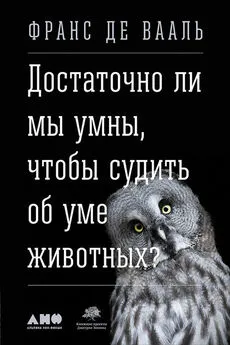

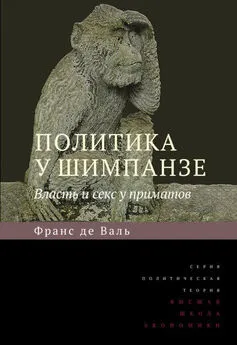
![Франс Вааль - Последнее объятие Мамы [litres]](/books/1075030/frans-vaal-poslednee-obyatie-mamy-litres.webp)
